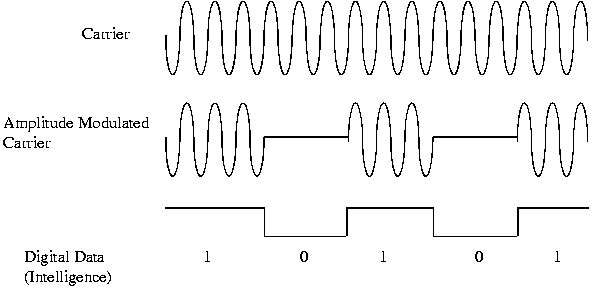| Introduction to Data Communications |
 Previous Previous
|
27. Modulation Techniques |
Next  |
 27. Modulation Techniques
27. Modulation Techniques
Modulation techniques are methods used to encode digital information in an analog world. The 3 basic modulation techniques are:
- AM (amplitude modulation)
- FM (frequency modulation)
- PM (phase modulation)
All 3 modulation techniques employ a carrier signal. A carrier signal is a single frequency that is used to carry the intelligence (data). For digital, the intelligence is either a 1 or 0. When we modulate the carrier , we are changing its characteristics to correspond to either a 1 or 0.
Amplitude Modulation modifies the amplitude of the carrier to represent 1s or 0s.
In the above example, a 1 is represented by the presence of the carrier for a predefined period of 3 cycles of carrier. Absence or no carrier indicates a 0.

Advantages:
Disadvantages:
- Noise spikes on transmission medium interfere with the carrier signal.
- Loss of connection is read as 0s.
